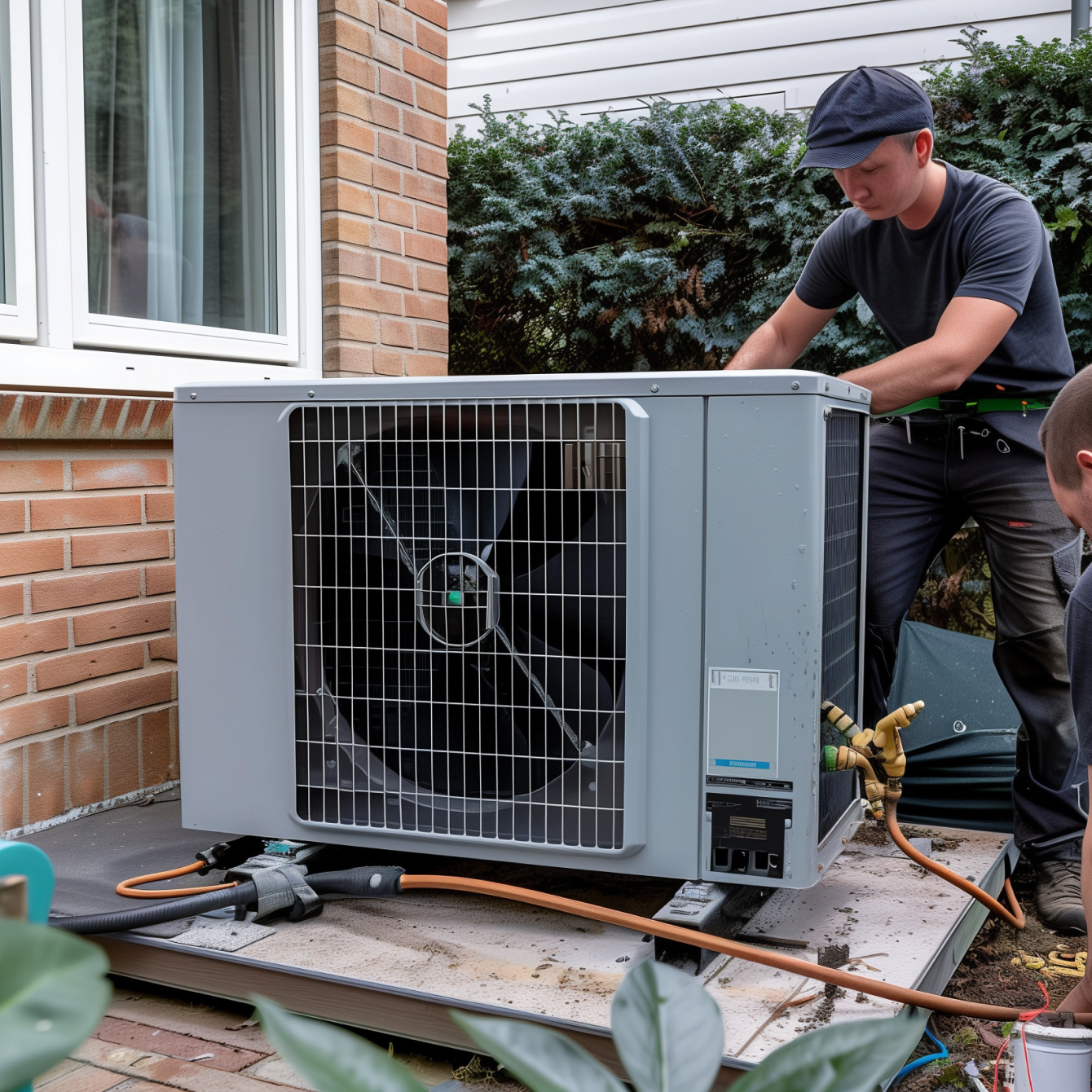Condensate in heat pumps: discharge, regulations and protection against damage

Air heat pumps remove not only heat but also moisture from the ambient air — which is often overlooked: What remains is condensate that must be reliably removed. What sounds harmless can quickly lead to damage, frost problems and legal consequences. But where to put the water — and what should be considered? You can find out here.
Why does the heat pump produce condensate?
Heat pumps produce condensate when moist outdoor air hits the cold evaporator surface and condenses water out of the air in the process. Especially with air-water heat pumps, the air cools down so much when heat is extracted that it falls below the dew point. The excess water settles as condensate on the device and must be drained off in a targeted manner to prevent damage and icing.
Which heat pumps are affected?
Nur air source heat pumps produce condensate as they remove moisture from outside air. When generating heat, the air cools below its dew point, which converts water vapor into condensed water. This applies to both monoblock and split devices.
Ground or water-to-water heat pumps, on the other hand, produce no visible condensate, as they do not dehumidify air.
How much condensate is produced?
On average, between 10 and 50 liters of condensed water are produced per day. Especially on cold, humid days, the quantity can increase significantly. The decisive factor is how much moisture the heat pump extracts from the ambient air. It is difficult to determine the exact amount of condensate in advance. You should therefore always plan a sufficiently dimensioned process.
What to do with the condensation water?
The condensation from a heat pump must be properly drained into the sewer system. A connection to the sewage pipe is absolutely necessary. You must not channel the water into the ground or into surface water. This is prohibited under current water legislation.
Comply with the requirements of DIN EN 1717, the Drinking Water Ordinance (TrinkwV) and the Water Resources Act (WHG) to avoid backlogs, frost damage and fines.
What are the construction requirements?
The cable must be laid in a frost-proof manner so that damage does not occur in winter. A connection to the sewage pipe is mandatory. For indoor installation or slope problems, you also need a lifting system. Look for a siphon with an odor trap and a backflow protection device. The planning must comply with the requirements of DIN EN 1717 and the WHG. This is the only way to ensure safe and legal operation.
What happens if the process is missing or defective?
If the condensate drain is missing or defective, frost damage, mould formation and backflow in the heat pump can occur.
The water collects under the unit and freezes at sub-zero temperatures. As a result, components can be damaged or leaking. There is also a risk of moisture damage to the building and hygienic problems. Anyone who does not properly discharge the condensate also risks fines, especially when discharged into soil or surface water.
Specialist company or connect yourself?
You should always have the condensate drain connected by a specialist company, as this must comply with legal regulations and technical standards.
Self-experiments often lead to mistakes, which result in damage and fines. But what you can do yourself: Plan a suitable process when you install the heat pump. Check regularly whether water drains properly and whether ice or dirt builds up. In winter, pay attention glaciations. In this way, you ensure long-term operation and avoid problems later on.
Checklist: Discharge condensed water correctly
autarc: Your partner for efficient planning of heat pumps — find out more now!
Rely on quality and expertise when planning and installing heat pump systems. With our Heat pump check receive comprehensive support so that you can implement your projects efficiently and sustainably. Contact us today and benefit from our expert knowledge!
%25203%2520(1).webp)